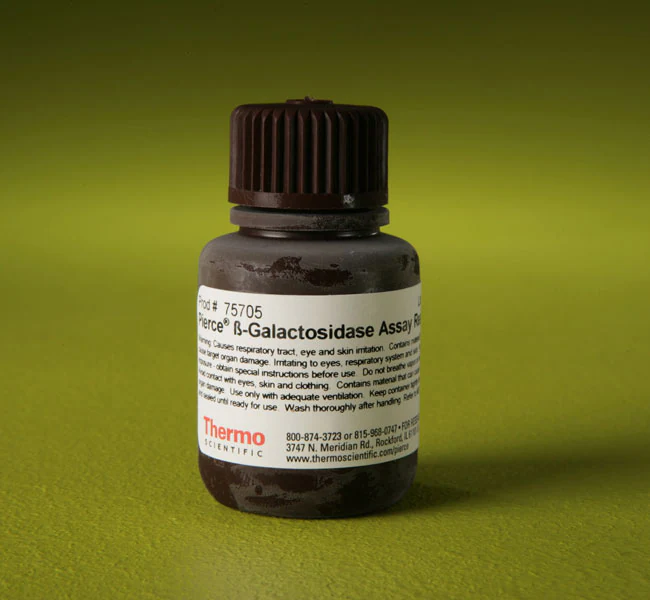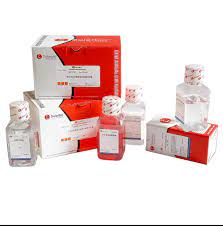Description
Beta-Galactosidase: The Master Key to Lactose and Beyond
Beta-galactosidase, often abbreviated as β-galactosidase, is a ubiquitous enzyme found in a wide array of organisms, from bacteria and fungi to plants and animals. This versatile biocatalyst plays a crucial role in various biological processes, primarily centered around the breakdown of complex sugars, particularly lactose. But its functions extend far beyond simple lactose digestion, making it a key player in fields like molecular biology, biotechnology, and even diagnostics.
The Primary Role: Lactose Hydrolysis
At its core, β-galactosidase is a glycoside hydrolase, meaning it catalyzes the hydrolysis of β-galactosides into monosaccharides. Its most well-known function is breaking down lactose, a disaccharide composed of galactose and glucose, into its constituent sugars. This is vital for organisms that utilize lactose as a source of energy and carbon.
Consider Escherichia coli (E. coli). This bacterium, a workhorse in scientific research, possesses the lac operon, a genetic system that regulates the production of β-galactosidase. When lactose is present, the lac operon is activated, leading to the synthesis of β-galactosidase. This enzyme then breaks down lactose into glucose and galactose, which the bacteria can readily use for metabolic processes. When lactose is scarce, the lac operon is repressed, conserving resources by preventing unnecessary β-galactosidase production. This elegant regulatory system demonstrates the importance of β-galactosidase for bacterial adaptation and survival.
Beyond Lactose: Versatility in Action
While lactose hydrolysis is the defining function, β-galactosidase exhibits broader activity. It can also cleave other β-galactosides, albeit often with varying efficiencies. This versatility has been exploited in numerous applications.
- X-gal Assay: Perhaps one of the most widely used applications of β-galactosidase lies in the X-gal assay. X-gal (5-bromo-4-chloro-3-indolyl-β-D-galactopyranoside) is a colorless substrate that β-galactosidase can cleave. The cleavage product forms a bright blue precipitate, allowing for the easy visual detection of β-galactosidase activity. This assay is invaluable in molecular biology for identifying cells or colonies that express the lacZ gene (which encodes β-galactosidase) or contain a functional DNA insert disrupting the lacZ gene.
- Glycobiology and Glycosylation: β-galactosidase plays a role in the study of glycans (complex carbohydrates) and glycosylation processes. By selectively removing galactose residues from glycans, it allows researchers to analyze the structure and function of these complex molecules, which are essential for cell signaling, protein folding, and immune recognition.
- Therapeutic Applications: Research is exploring the potential of β-galactosidase in therapeutic applications. For instance, enzyme replacement therapy for patients with certain genetic disorders involving galactose metabolism could benefit from engineered or modified forms of β-galactosidase. Furthermore, β-galactosidase can be used to activate prodrugs (inactive drug precursors) selectively at tumor sites, targeting cancer cells while minimizing damage to healthy tissues.
Sources and Production
β-galactosidase can be obtained from various sources. Bacteria, particularly E. coli, are commonly used for large-scale production of the enzyme through fermentation processes. Fungi, such as Aspergillus niger and Kluyveromyces lactis, are also valuable sources. The choice of source often depends on the desired properties of the enzyme, such as pH optimum, temperature stability, and substrate specificity.
Challenges and Future Directions
Despite its widespread use, there are challenges associated with β-galactosidase. Enzyme stability, activity under specific conditions, and potential allergenicity are factors that researchers are actively trying to address through protein engineering and other techniques.
Future research aims to:
- Develop more robust and efficient β-galactosidases for industrial and diagnostic applications.
- Engineer β-galactosidases with tailored substrate specificities.
- Explore new therapeutic uses for β-galactosidase, such as in targeted drug delivery and enzyme replacement therapy.
- Develop more sensitive and rapid β-galactosidase-based assays for diagnostics and environmental monitoring.
In conclusion, β-galactosidase is a remarkable enzyme that plays a crucial role in numerous biological processes. From lactose digestion to advanced biotechnological applications, its versatility has made it indispensable in various fields. As research continues to unlock its potential, β-galactosidase is poised to play an even greater role in science and medicine in the years to come.













Reviews
There are no reviews yet.